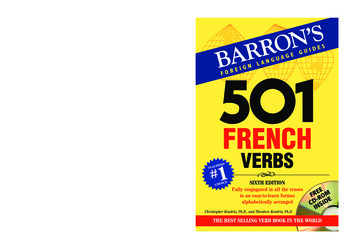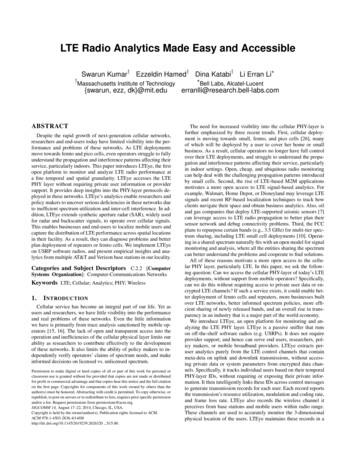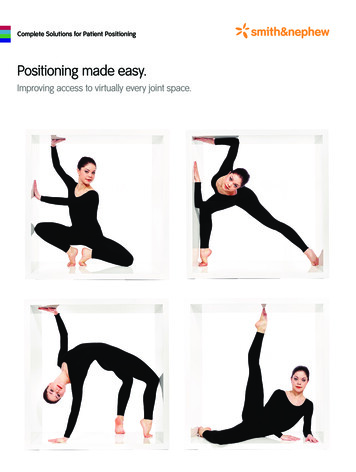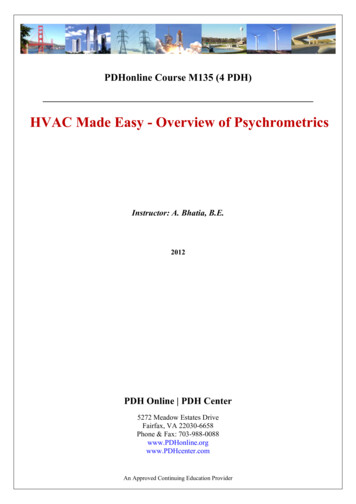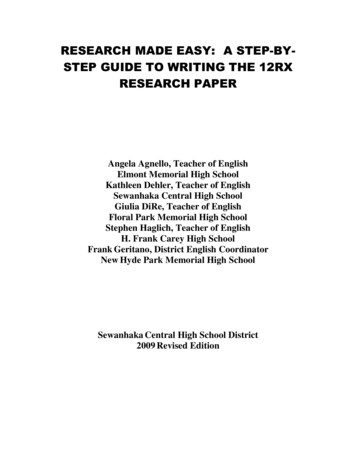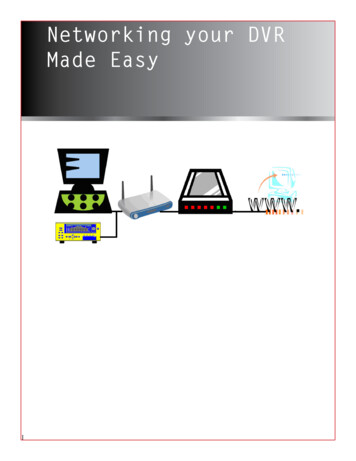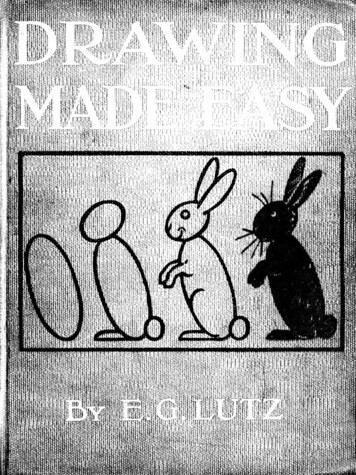
Transcription
Pilipiii
.1.1
;vr:m) l, " -i)
BOOKS BYWithLUTZE. G.Illustrations by theAuthorPRACTICAL DRAWINGA book for the student andthe generalreaderPRACTICAL ART ANATOMYStructuralanatomyof thehumanfigureunderstood by ingeniously drawndiagramseasilyANIMATED AWING MADE EASYAhelpful book foryoungartistsPRACTICAL GRAPHIC FIGURESThetechnicalsideofdrawing for car-toons and fashionsTHE MOTION-PICTURE CAMERAMANA book for the amateur and professionalcinematographerPRACTICAL PICTORIAL COMPOSITIONA guide to the appreciation of pictures.With pen-and-ink inlerpretalions of paintand diagrammatic analyses by theingsauthorPRACTICAL PEN DRAWINGA clear presentation ofpen-and-ink illustra-tionMORE THINGS TO DRAWAsequel tofulbookforDrawing Made Easy.young artistsPRACTICAL ART LETTERINGA treatise on the constructionA help-of thesym-bols of the alphabetPRACTICAL LANDSCAPE PAINTING INOILSA bookto interest the general reader aswell as the art studentPRACTICAL WATER-COLOR SKETCHINGClear and simple directions for painting inwater-colorsPRACTICAL ENGRAVING AND ETCHINGCHARLES SCRIBNER'S SONS
DRAWING MADE EASY
DRAWING MADE EASYA HELPFUL BOOK FORYOUNG ARTISTSTHE WAY TO BEGIN AND FINISH YOUR SKETCHESCLEARLY SHOWN STEP BY STEPBYE-G-LUTZNEW YORKCHARLES SCRIBNER'S SONS1935
Copyright, 1921, byCHARLES SCRIBXER'S SONSPrinted in the United States of AmericaAll rights reserved. No pari of this bookbe reproduced in any form withoutthe permission of Charles Scribner's SonsmayY 'hS 37377
THR.U5HL 'CONTENTSPageThrushParrakeets7,.«10»Things needed for drawing11Drawing curves with the help of aseries of dotsMaking designs based on a square and with the helpDrawing designs with the compasses and with aB'rerFox12, 13of the compasses14, 15a foundation16, 17circle as".18Top, radish, Christmas tree19Camp20fireIndian tent21Glass fish bowl22Cherries, tea-pot, fan, etc23 ilobe24Walloono25
CONTENTS8Drawing leavesPage—maple and oak37Butterflies.V ,028,31Bees, cloverResemblances,32.Morning-glory, narcissus33Pansies34Buttercups and 9Owl40Owl's head41Duck and penguin42Swallows43Goose, duck44Stork, heron45Running dog and monkey46Elephants47Drawing a pig with asingle lineand with the eyes closedCat and mouse4849PigsCat and mice.„5051
CONTENTSPageBird, snail, tortoise,Squirrel, flicker,and52fishchipmunk, thrush5354Prairie-dogsBuffalooInstructions for drawing horses,55.56Standing horse57Horses in movementHouses60Sailboat, tugboat61Ocean62lifeSailboats63Dolls64Moredolls todraw65Babies66, 67Little Hollanders68, 69Drawing,58, 59faces in profile.71„.Boys' faces.72Expressions73Round74faceRectangular featuresFace drawn within anTriangular featuresoellipse.757677
CONTENTS10Page78Single-line action figuresSingle-line action figuresAutomobiles.c.Locomotive and car .84»c.85o«o86easy lesson in perspective in railway trains87Drawing landscapesAn79 to 83».AirplanesAn.88 to 91aid in drawing ovalsPatterns for shields and ornamentsTo draw an9293 .94ellipseLandscape sketchoPAR-Rj!\K.EET5(l)n.w vo95'
DRAWING MADE EASY11DRAWINGBOOKPENCILCOM PA55 ESLtAD PENCILS OFMEDIUM GRADEAPAD OFSCRIBBLING PAPER. Ll L l ''V'' /Lg // , 'i /',W'/r/5AND- PAPER.BLOCK.FOOT-RULECOLOREDCRAYONSTHINGS NEEDED FOR DRAWINGAand a pad of scribbling paper is about all you need incopying most of the pictures in this book. A soft rubberforerasing would be good to have, too.You might also get alead-pencilsmallwoodencil-point.triangle, a foot rule, and compasses witha penThese few tools are the modest representativesofthe accurate instruments that inventors,engineers, and architects use in planning the things that weuse every day. Thehouse you live in, the vehicle in which youride, and themachines that make the many things youwear and usewereplanned and drawn out with the aid of dividers,compasses,rulers, and other drawing instruments.Point the lead of your pencil on a block ofsandpaper. No doubtyou will want a water-color box. It is a good thingto have,but you can get lots of enjoyment in coloringyour drawingsfirstrifVir»rQ\7-nr»c
DRAWING MADE EASY12A.Notin this angularway-B.Butlike this, inone continuous flowing curve.DRAWING CURVES WITH THE HELP OF A SERIESOF DOTSIn the objects about us that we think of as beautiful,their color thatit isn'tattracts or holds our attention.Italwaysveryisanother matter; namely, their form or outline. Forinstance, in a vase, the gently curving lines of the form pleaseIn flowers, leaves, andas much as the color of the material.shells, the outlines that define the shapes delight the eye aswell as the varied colors.diagrams on the opposite page are to suggest exercises in drawing that will help you to appreciate beauty in line as well ashave you understand the importance of thinking while drawoftenTheMakeing.Be sure andNow, if we take2, 3, and 4: wea series of scattered dots as shown.have the dots atdifferent distances apart.example, with the dots marked, 1,start our line at the 1st dot, continue it to the 2d, and then tothe 3d, and ending at the 4th. The idea is to make an easyflowing curved line from the first dot to the last. There mustbe no break or angular turning. In doing this, try to forgetthefirstthe pencil-point, and think only of a curved line that you areimagining as already marked on the paper going through thedots.If—you keep your eye on the pencil and watch it as you draw thewrong way the line will be like that in Diagram A, above,angular and wanting in beauty.—
DRAWING MADE EASY 413
;DRAWING MADE EASY14MAKING DESIGNS BASED ON A SQUARE ANDWITH THE HELP OF THE COMPASSESSomethings about geometry are explained above in a way that n(doubt will impress you. There will be no excuse, now, of noknowing the names of the different parts of a circle.The first thing to do in making the designs on the other page is tcconstruct a square. This can very easily be made with theWith the foot rule measure off the'foot rule and triangle.length, and with the triangle getofofequalthe squaresidesthe corners exactly right-angled.Theseven designs are made by placing the point of the compasses in comers, as shown in B. In Figure 8 you have four otherj ;-- ,points to set your compasses, with whirV. ri -o , first—
DRAWING MADE EASY
DRAWING MADE EASY16ACUTE ANGLEPARALLEL LINESRIDGE-RAILWAYTRACKSRIQHTANGLE.L-SHAPEDWEDGE"- X/ELLIP5ESQUARE - /WHEELROOFIN PERSPECTIVETRIANGLESICKLECRESCENTcrescent withINTE115ECT1NG C1R.CLE55PIRALSNAIL'S SHELlgeometrical figures.Similar forms in things and inDRAWING DESIGNS WITH THE COMPASSES AND WITHA CIRCLE AS A FOUNDATIONas shown in A, on the"a circle with the pencil compassesKeep the legs of the compasses, when you haveopposite page.as they werecompleted the circle, at the same distance apartif markedwhen describing it. Now this distance—the radius—sixexactlygowillthe circle,off around the circumference of(Turn back to page 14 again, to be reminded,times, as in B.of ** radius" «nHby glancing at its picture, of the meaningDraw"circumference.")marking the radiusThis dividing of a circle into six parts byif you find th,circumference is an unalterable law, andattempt, it siidoes not come out this way, on your firsthave dravmeans that you must try again. When youin gettmg the pcnumber of circles, and worked carefullyfor drawmgfoundationsequally marked, you will haveremainder of the page. Figurfigures and designs on theplane, while below it,. Figure 4,is a hexagon, or six-sidedangles and three "sides.triangle, or plane with threemade withm a squThese designs, as well as those on page 15,may be brightened up with the colored crayc 'ls.;.- i
DRAWING MADE EASY17
DRAWING MADE EASY]R----- "vrP-"."'»%9J!\a\\ :5/VI\, \\ .6Theu:t'firstthing in drawingwe wishto picture.isb'rer.y i\inIII/J.foxto understand the form of that whichSomewe mustobjects are so oddly formed anc/ soand give a few minutedetail.But tl:are other things of simpler form, and so easier to draw.1pictures on these two pages, for instance.It is very quicgrasped by the eye that their general outlines are bouncby triangles. If, then, a triangle is drawn first, as indicatedfullof detail thatstopfirststudy their form and the meaning of thethefirstfigure of each example, the rest of theproceeded with very quickly.drawing can
n! ted:3J DRAWING MADE EASY19Y yIyVTOPRADISHAachri5tma5« LY\//V"' 11 I[I.rOTTTTlltree
—DRAWING MADE EASY20VAII//.-.Art/?k A/]CAMP'FIR.E4" a-- '"'). -.,— .2 "1-.' ,.i Nt/V-W , 4-*Here are two more subjects that are very easy to drawcharacteristic forms—triangles—arefirstif theirindicated.not intended that the dotted Hnes in the diagrams are to becopied by you as dotted Hnes. Dotted hnes in these examples,and in the diagrams throughout the book, merely representconstruction lines that are to be marked faintly.In going on with your drawing by following the lesson as indicated above, it is well to keep constantly in mind that it isItisthe completed sketch, as in Figureing to copy.4,that you are endeavor-
ijkawing made easy21VAIt is very quickly understood, at the first glance, that theRedIndian's tent has a triangular outline.Theconstruction lines, which you havemarkedfaintly,as sug-gested on the preceding page, need not be erased in completingWhen you havecopied the landscape, place inthe distance a horse, or a buffalo. Farther on in the bookare pages with pictures showing you how to proceed in pictYou noticed, of course, while you wereuring such subjects.drawing this picture, that the flap of the tent and the openthe sketch.ing are both triangular.
DRAWING MADE EASY22 -- JGLA55 FISHBOWLare made first in starting the subjects on these pages.Where the form is clearly a circle, the fish bowl above, forinstance, use thBut in picturing the cherries,::ompasses.the toy dog, o.t radish, draw t ' " r-iVr-i -c fr * .v.or.HCircles
DRAWING MADE EASY23
DRAWING MADE EASY24globe:Theglobe pictured on this page requires some verywork with the compasses. For the middle line of theequator and the central line of the support use the ruler. Ina subject such as this, where the lines are unmistakablyterrestrialcarefulstraight, use a ruler.
DRAWING MADE EASYbALLOON/O25
DRAWING MADE EASY26MAPLE LEAFANDMAPLE. 5EEDDRAWING LEAVESDuring the summer youpatterns for drawing.will findmanyleaves that can serve asThe oak and the mapleleaf are givenhere as examples.Ifyou try, in your first lines in copying one of these leaves, tomark the way the outline goes in and out, you will not getalong very well. The best plan is to block out the entirespace that the leaf takes up, and then draw the ribs, and afterthat the outline.Besureand draw otheror on plants.attentiontolittle detailsleaf- forms.,Before youtheirgeneralare thenmucht ose that you find in the woods,beg;,tcsketch them, give someform and mark that first. Theput in their proper places.easier to
DRAWING MADE EASY27OAK- LE.AFANDACOR-NHere o.If a squirreldoesat e-trae Til bea bi oak "tree some dayI,"My capFeelsfpif leloose!a ''
DRAWING MADE EASY28BUTTERFLIESMakingpictures of butterfliesisnotdifficult.Youwillseeonpages 29 and 30 the progressive steps by which five diff'erentkinds are pictured. In each case it is the last figure of eachAnd Figure 1,series of diagrams that you are striving to copy.in each case, shows the first lines that you put on the paper.It is also possible to draw butterflies in the way suggested fordrawing leaves; that is, marking out at the beginning thewhole space that the subject takes up.But the five simple combinations of lines, grouped above, are soexpressive of our subjects, that marking them first makes avery good way to start picturing the five butterflies.Notice how one of these butterflies, in its construction lines, resembles the letter Y, while two others suggest the letter X.!
DRAWING MADE EASY2.\AJ5BUTTER-FLIES\Qy J294-
DRAWING MADE EASY30XBUTTER FLIESD\ '''\00
DRAWING MADE EASYC 0 TheTheseries ofdiagrams on the top ofthis31BEESpage show how to goabout making pictures of bees.clover blossom and leaves are blocked out first in lightlymarked lines, as indicated in Figure 1. Continue with thework, and when you have finished it, as shown in Figure 3,you may sketch a bee resting lightly on top of the clover blossom. That is the way you often see bees when they are gathering honey in the summertime.And remember to indicateone flying to the hive with his gathered honey and pollen.
DRAWING MADE EASY32The engraving above shows us the resemblance between a morningglory and a funnel,andand thelikeness of a narcissus to acupsaucer.Now, theidea of showing these comparisonsstand the forms of these flowers.isto helpAs you know,you under-it isa greathelp in drawing to understand thoroughly the form of thewe are drawing. Take the morningby keeping in mind its striking resemblanceto a funnel, a very simple thing to picture, we are able tovisualize it in simple lines and so sketch it easily.And in the narcissus; if you do not allow the minor divisions tobother you, but see at once the resemblance to a cup andsaucer, you will know how to go about the work of drawingwith much more facility. That is, you will plan as yourstart some form like a cup and its saucer, as shown inparticularobject thatglory, for instance;FigureThe2of the narcissus diagrams on the opposite page.pictures of beesmakeyouwillbutterflies thatyou now know how tobe good to combine with the flower sketches thatdraw from the lessons on the five followingwill learn topages.and
DRAWING MADE EASY33MORNINGGLORYNARCISSUS\C'
DRAWING MADE EASY34Mr PAN51E5Thediagrams above show how to draw the outlines of a pansy,and the five varied -patterned pansies below give a hint forsixfinishing with the pencil or crayons.Thepicturing of buttercupspage.anddaisiesisexplained on ht oppositei
DRAWING MADE EASYBUTTERCUPSAND DAISIES35
36
Drawingleaves—mapleandoak 37 Butterflies 28,.V,0 Bees,clover 31 Resemblances, . 32 Morning-glory,narcissus 33 Pansies 34 Buttercupsanddaisies 3S Jack-in-the-pulpit, 36 Fuchsia 37 Rabbits 38,39 Owl 40 Owl'shead 41 Duckandpenguin 42 Swallows 43 Goose,duck 44 Stork,heron 45 Runningdogandmonkey 46 Elephants 47 .
